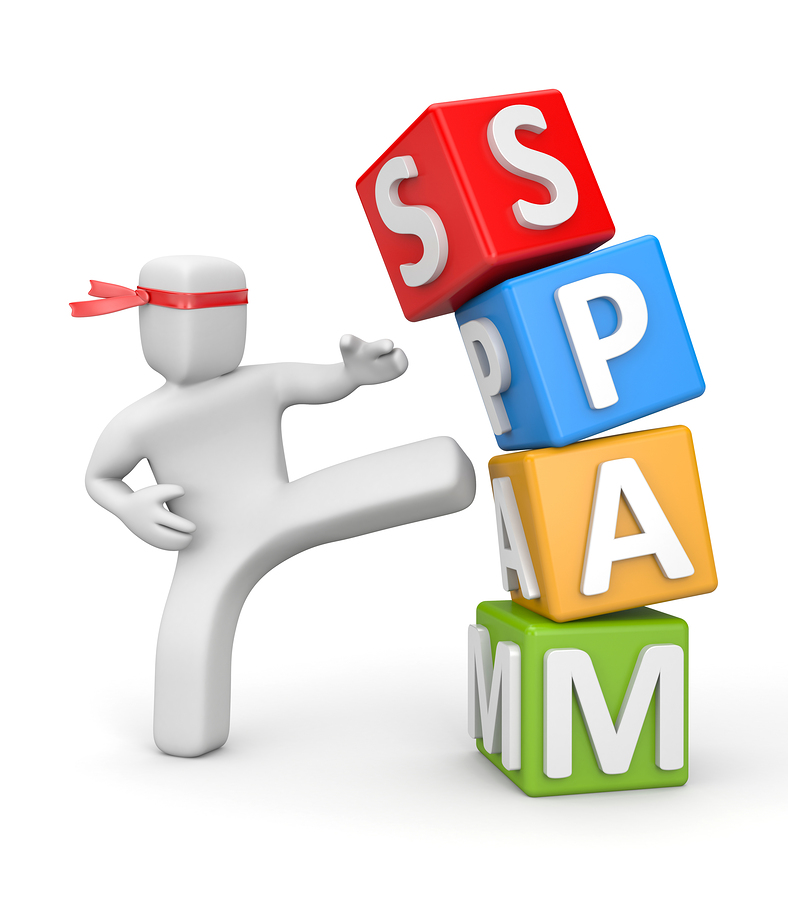I’m no fan of email, as I’ve detailed before; it’s an outdated technology that mostly causes us grief by piling up messages endlessly, never to be fully answered or processed. How many messages do you have in your inbox? Ten? Twenty? One thousand? I’ve seen people with nearly 10,000 messages in their inboxes. Poor souls!
Many people with overflowing inboxes don’t even have poor email “hygiene” - they just can’t keep up with the volume of real messages that arrive for them every day. For those of you who simply can’t control the the firehose of messages directed at you every day, I can’t offer much solace. You could hire an assistant or just keep trudging through the messages like Sisyphus pushing his rock up the hill.
 Even better, you could declare “email amnesty” and delete everything. Let all your colleagues know that you’ve given up and they’ll have to email you again if they’re still waiting for something from you. It’s a drastic measure, but an effective one.
Even better, you could declare “email amnesty” and delete everything. Let all your colleagues know that you’ve given up and they’ll have to email you again if they’re still waiting for something from you. It’s a drastic measure, but an effective one.
Many of you, however, have a different problem: You’re not getting the emails you expect to get. You may not really fret too much when yet another kitten meme from your sister fails to surface in your inbox, but when important emails like orders, quote requests or employees asking for time off don’t show up in your email, then you’ve got a problem.
The thing is, this is increasingly common as the volume of email and spam we receive continues to grow unabated. Aggressive spamming leads to more aggressive anti-spam tactics, which means it’s even more likely that legitimate messages periodically get caught in the crossfire.
Add in corporate firewalls, new methods of identity enforcement, and the migration of a good chunk of messaging traffic to non-email platforms (Facebook, Snapchat, Slack, etc.), it’s a wonder that we can deliver email reliably at all. Like the Postal Service, it’s beginning to creak under the weight of its own antiquated model.
Easy Fixes
When you don’t get an email you’re expecting, or a co-worker berates you in the break room for not RSVPing to their baby’s gender announcement party (yes, those exist, and sure, maybe you just, ahem, accidentally deleted that one), there are a few obvious steps you should take first:
1. Check your spam folder. Sure, this is the oldest tip in the book, but it’s the one I always forget! I’ve fine-tuned all my email management with so many rules and spam-prevention services that I often completely neglect to periodically check my spam folder to make sure that important messages aren’t being diverted there.
 All sort of strange factors can trigger spam flags on legitimate messages, from specific types of language to the excessive use of exclamation points. Normally, senders that normally make it into your inbox won’t be flagged because of this, but it happens periodically.
All sort of strange factors can trigger spam flags on legitimate messages, from specific types of language to the excessive use of exclamation points. Normally, senders that normally make it into your inbox won’t be flagged because of this, but it happens periodically.
Most email clients have a clearly visible “Spam” or “Junk” folder, so if your sender’s message would up in there, it’s important to both move the message to your inbox and make sure that you click any “Not Spam” or “Not Junk” buttons that your email client displays on the message. That will help ensure (though nothing is foolproof) that the sender doesn’t get sent into spam purgatory again.
2. Check other automated folders. Many email clients now try to organize your messages for you to help you sort through the mass of email and determine what to look at first. Google’s Gmail now groups messages into four tabs: Inbox, Social, Promotions and Updates. Other emails clients now offer similar automated rules to put lower-priority messages in secondary tabs or folders, or allow you to designate “VIP” senders for special treatment.
These are all wonderful features, but they can often lead to confusion when a sender that normally gets placed into one bucket somehow winds up in a different one. Before you hit the panic button, make sure you check all your automated tabs and/or folders to make sure something didn’t trigger the message being sent to the wrong place. You still got it, just not where you were expecting it.
3. Make sure it was sent! This one sounds goofy, but I can’t count the number of times I called someone and said “didn’t you get my email?” only to discover that it’s still sitting there in my email client - I forgot to hit “send”! You may not feel comfortable asking someone to make sure they actually hit send; if so, kindly request that they send it again. That will save face for both of you; if they forgot to send it, they can send it now without embarrassment.
Digging Deeper
You may have mastered the simple troubleshooting steps above (hey, a refresher never hurts!) yet still find the occasional delivery problem. There’s actually a wonky industry term for this: “deliverability”. That’s right; reliable email delivery is such a common problem that engineers and developers spend their days trying to fix it. Engineering email “deliverability” is a technical calling unto itself.
Email delivery can fail at many points, but in many cases it’s going to fail in a way that will be obvious to the sender; in other words, their messages aren’t getting to anyone, so it’s on them (or more likely their email provider) to figure out the problem. Smaller failures are more difficult to diagnose, and here are some tips for troubleshooting those peskier email problems:
1. “Whitelist” the sender. Whitelisting is the process of telling your email client or email host that a given sender (or domain) is authorized to send you email. Think of it like making a guest list for your party and handing it to a doorman. The doorman (in this case, your email client or your email service provider) asks the sender if they are on the guest list; if they are, they’re allowed in, no matter how ugly their outfit or how cheap the bottle of wine they brought with them. This can help make sure that the golfing buddy who sends you that $75K order every year gets through even after he sends you one too many dirty joke chain emails.
 Whitelisting can be done in a variety of ways, but it’s most reliable when it’s done by your email provider. Check with them to see what options they offer; many email providers have a web interface for handling things like whitelisting and forwarding.
Whitelisting can be done in a variety of ways, but it’s most reliable when it’s done by your email provider. Check with them to see what options they offer; many email providers have a web interface for handling things like whitelisting and forwarding.
2. Talk to the sender about SPF or other authentication methods. Years ago, email providers got together and created something called the Sender Policy Framework, known more commonly by its shorthand, SPF. SPF attempts to control one of the biggest native flaws in email: Spoofing. Email spoofing means that someone can send an email on your behalf without actually being you. This sounds bad, and in many cases it is; you don’t want your dear old aunt to get a message from you begging her to send money to Nigeria.
In practice, though, many services use spoofing to send emails on your behalf for legitimate reasons, like sharing a product idea or news article with someone. SPF has made these actions quite difficult to carry out reliably, so many sharing tools now just give you a link to share with your own email client, or (as they often prefer, because it offers better tracking) encourage you to share via social media like Facebook or Twitter.
So, when everything else above has failed and you still aren’t receiving the messages, it’s time to start asking deeper questions about where the emails are coming from. You may quickly exceed your technical depth, but tossing a “have you checked your SPF records?” question in the direction of the sender (and their email provider) can often get the investigation moving in the right direction.
Brent Buford is a co-founder of eBlox, a Tucson, AZ and Austin, TX-based web development firm. He can be reached at brent@eblox.com.